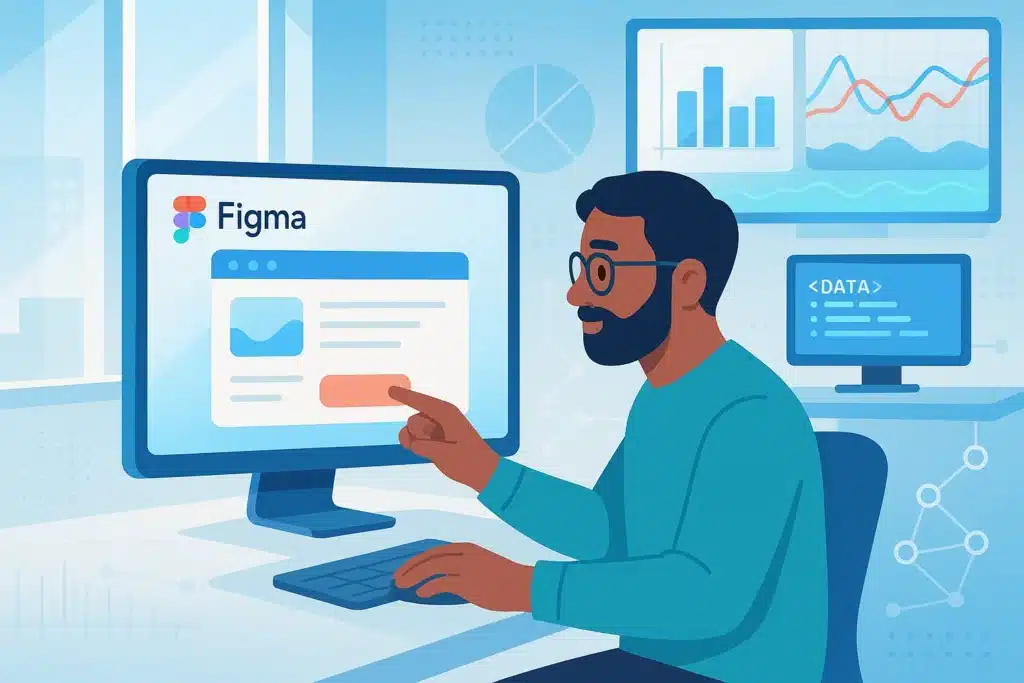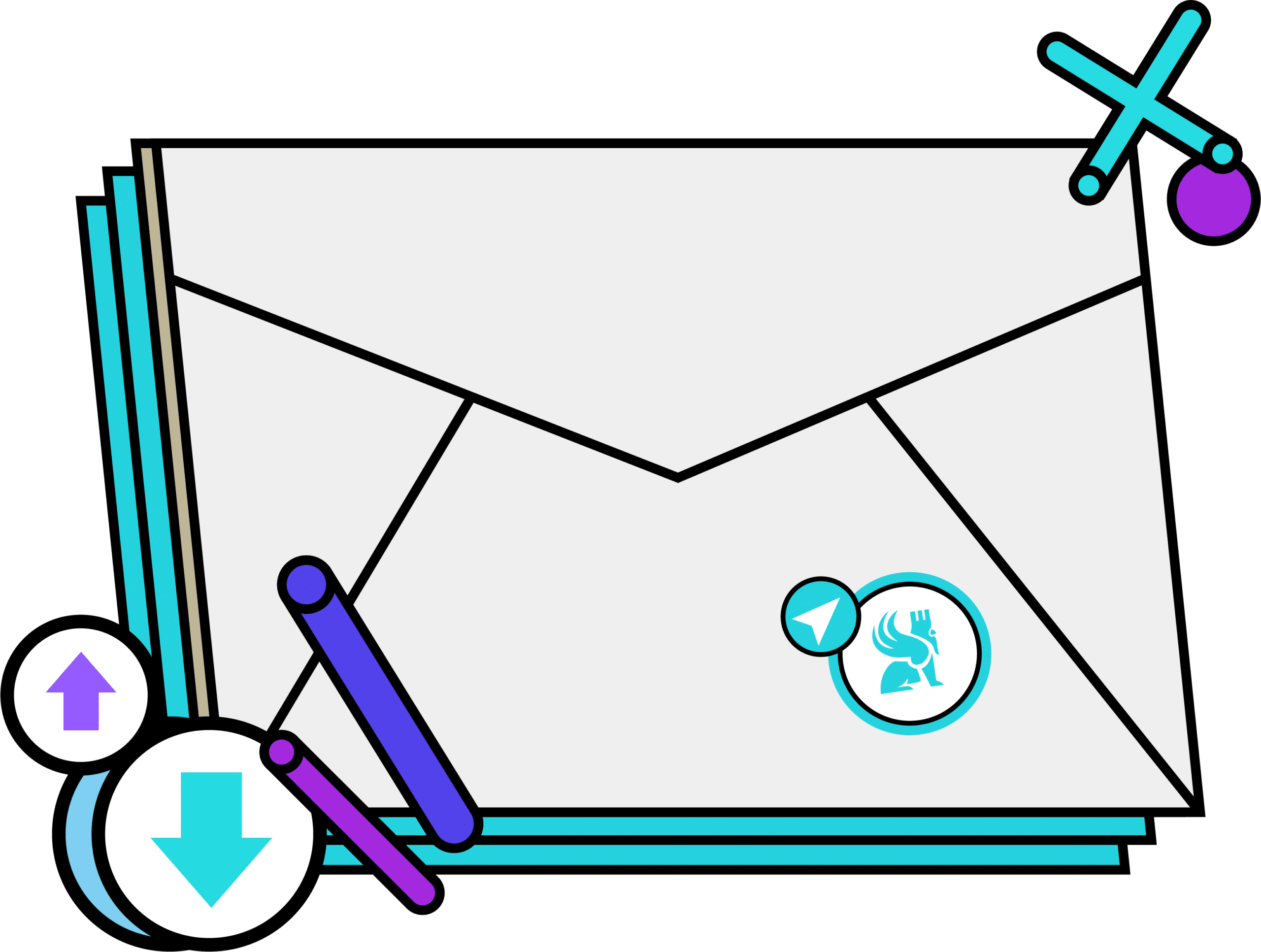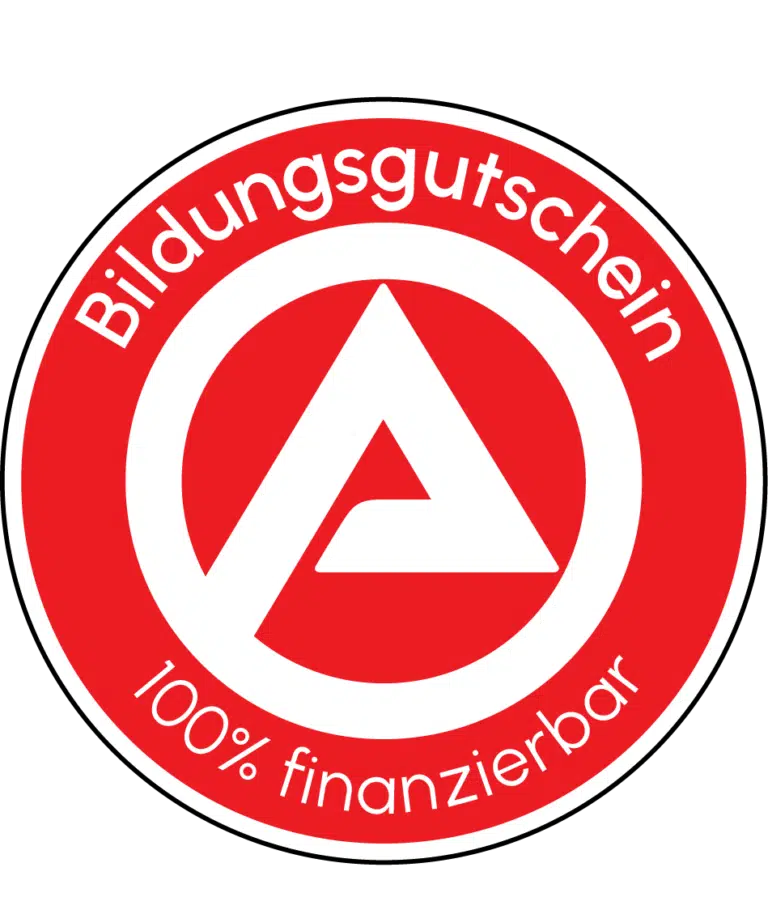Figma is a cloud-based collaborative interface design tool. It enables you to create, prototype, and share designs in real-time without needing to install software or write any code. Discover what contributed to its rapid success!
There was a time when designing a user interface required not just technical skills but also cumbersome, complex tools often unsuitable for teamwork. Every change involved VSD files, endless email exchanges, and awkward collaboration between designers and developers.
Then along came Figma. A 100% online design tool, created from the outset for real-time collaboration. It’s a fluid, intuitive, and accessible platform even for those who have never used Illustrator. In just a few years, it has become vital in both startups and large corporations. More than 10 million people are expected to use it by 2025, including top brands like Netflix, Uber, BMW, Spotify, and Airbnb. It directly competes with Adobe XD, InVision, Canva, Framer, Sketch, and Miro. It has disrupted traditional design software and redefined work methods. So what makes it truly revolutionary?
And why does it hold such appeal for designers, product managers… and even developers? Here’s why!

An all-in-one platform for UI design
At its core, Figma is a user interface (UI) design and user experience (UX) design tool, completely cloud-based. No installation is needed: everything takes place in the browser, with a smoothness that makes you quickly forget about more cumbersome software.
But what really makes Figma unique is its ambition: to consolidate the entire product design cycle onto a single platform. Mockup design, interactive prototype creation, design systems management, real-time sharing, and feedback – Figma handles it all. It’s akin to Google Docs but for design mockups.
If you’re designing a mobile app, for example: in Figma, you draw screens, define interactions, simulate transitions, invite the team to comment, and deliver assets to the developers. All without leaving the interface, and without using filenames like “figma-final-v3-vf.fig” or sending files through WeTransfer. Yes, Figma has also charmed users with its simplicity. Its clear interface, shortcuts similar to tools like Sketch or Adobe XD, and quick onboarding make it accessible even for non-designers.
Clearly, it’s a tool designed for modern product work: fast, collaborative, and solution-oriented.
Real-time collaboration: the true game-changer
Collaborating on the same file, at the same time, without version conflicts, email exchanges, or “can you resend last night’s .fig?”, is the promise that Figma delivers.
From its launch, the tool focused on real-time collaboration, while its competitors remained centered on a “desktop + manual sync” model. This gives it a work fluidity reminiscent of Google Docs. Multiple collaborators can simultaneously modify the same mockup, add comments, move components, or animate transitions.
This shift has transformed workflows. A product manager can comment on a mockup while the designer adjusts it, a developer checks specs, and the client… observes everything in read-only mode. No more isolation, no more information loss, no more delays. This collaborative dimension extends further: shared libraries, organizational-level design system management, precise permissions, integrated versioning… Everything is aimed at allowing the product team to work as a single visual brain, no matter the time zone or job role.
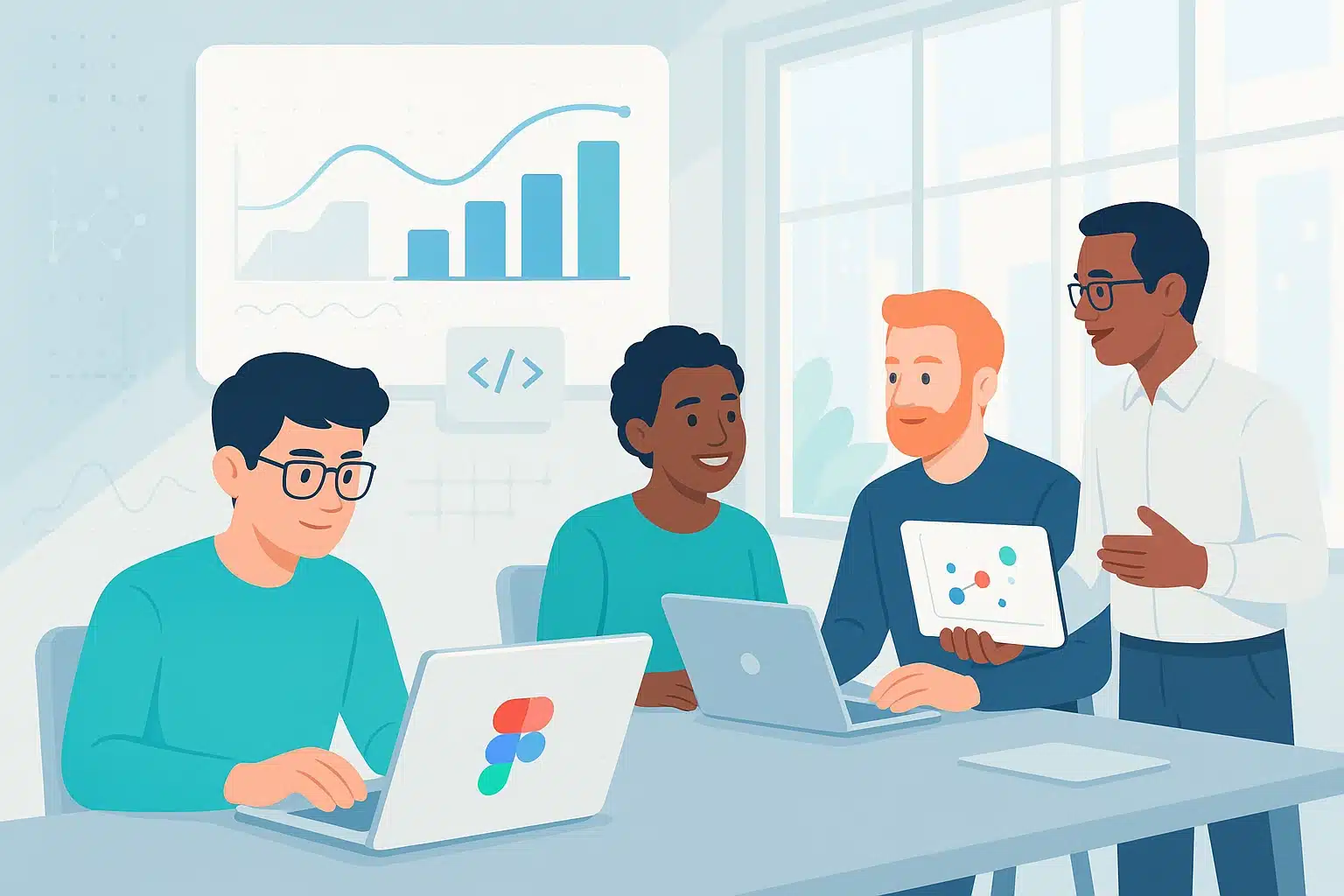
Figma vs Sketch, Adobe XD...
Before Figma, the design world was dominated by two giants: Sketch on Mac, Adobe XD on all platforms. But neither addressed the increasing demand for collaboration and accessibility. Figma checks all these boxes. It’s cloud-native, so accessible from any device, without installation.
It is also free for individual or small team use, with a well-calibrated freemium model. It’s a solution compatible with all systems, allowing mixed teams (Mac, Windows, Chromebook) to work collaboratively.
In contrast, Sketch’s dependency on Mac and lack of a native collaborative mode slowed its adoption. Adobe XD, despite its integration with the Creative Cloud ecosystem, never caught up with Figma in terms of real-time collaboration and community. Indeed, Figma also benefits from a dynamic ecosystem: plugins, templates, UI kits, educational resources, and active communities (like Figma Community, Figma Config, and Figma Events).
It’s not just a tool but also a hub for exchange and inspiration. A major turning point came in 2022: Adobe announced the acquisition of Figma for 20 billion dollars. A sign, if needed, that the new king of collaborative design has truly arrived… even if this acquisition raised concerns in the community.
A tool for designers... but not only!
Figma might have been birthed in designers’ hands, but it is no longer confined to just their use. Product managers, front-end developers, marketers, clients… all find it beneficial. For developers, Figma simplifies the transition from design to code. Through the Inspect mode, they can directly view CSS properties, dimensions, fonts, hexadecimal colors, without needing to ask for an export.
Specifications are readable, neat, and always up-to-date. On the product side, users appreciate the ability to comment on a mockup in context, organize screens by user flow, create dashboards or user journeys… Thus, Figma becomes a true visual product management tool. Even non-technical profiles can navigate it. With well-thought-out permissions, clients can view, comment, approve, without ever disrupting the mockup.
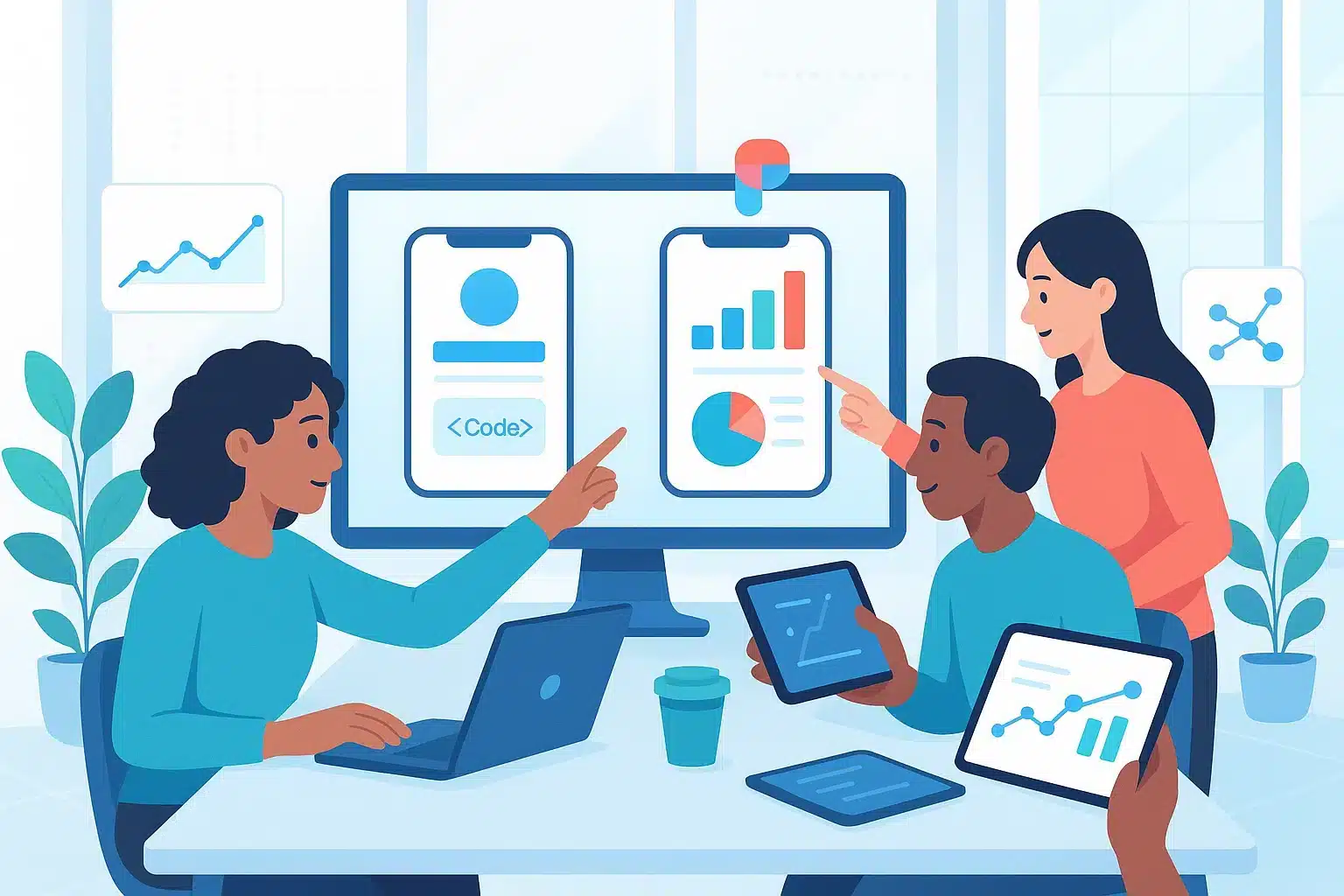
Prototyping and testing without coding: the UX bonus
There’s no need for React or Swift to test an interface. Figma enables you to create interactive prototypes directly from the mockup without writing any code. Transitions, animations, overlays, navigation between screens… It only takes a few clicks to simulate a believable, clickable user journey, testable on desktop or mobile. In some respects, it’s a UX validation accelerator. Users can trial the product before a single line of code is ever written.
Furthermore, these prototypes can be shared via a simple URL, tested remotely, presented in meetings or workshops. They can even be integrated into user testing tools like Maze, Useberry, or Lookback. Ultimately, there are fewer misunderstandings, more feedback, and a tangible vision of the final product from the early design phases.

Figma and integration into the product ecosystem
A good tool is worthless if it stands alone. And once again, Figma ticks all the boxes. It naturally integrates into the ecosystem of product management, development, and communication tools.
Need to centralize feedback? Figma interfaces with Slack to provide real-time notifications of comments or changes. Want to monitor project progress? It connects with Jira or Linear to link each screen to a user story. Need to document the design? It integrates with Notion, Confluence, or even Storybook to enhance technical or functional documentation.
And on the developer side, plugins like Anima, Zeplin, or Figma Tokens facilitate moving from design to code with exportable assets and consistent styles. Some even generate HTML, React, or Tailwind to accelerate early product versions.
Criticisms of Figma
No tool is perfect, and Figma also has its blind spots. When a project becomes very complex (hundreds of screens, nested components, heavy design systems), performance can suffer. This is especially noticeable on slightly older machines. The experience stays smooth, but it’s not always instantaneous.
Another concern: cloud dependency. Without a reliable internet connection, no design work is possible. And if there’s an issue on Figma’s servers, everyone is stuck. This is an acceptable risk for most teams, but worth considering.
Lastly, Adobe’s acquisition of Figma in 2022 raised concerns: will the initial promise of free access, openness, and independence endure in the long term? So far, few major changes have been observed, but caution is warranted.
Looking to the future, Figma continues to innovate: Dev Mode to streamline developer workflows, automation features, generative AI for generating components or adapting interfaces on the fly… Visual design is evolving, and Figma aims to stay at the forefront.
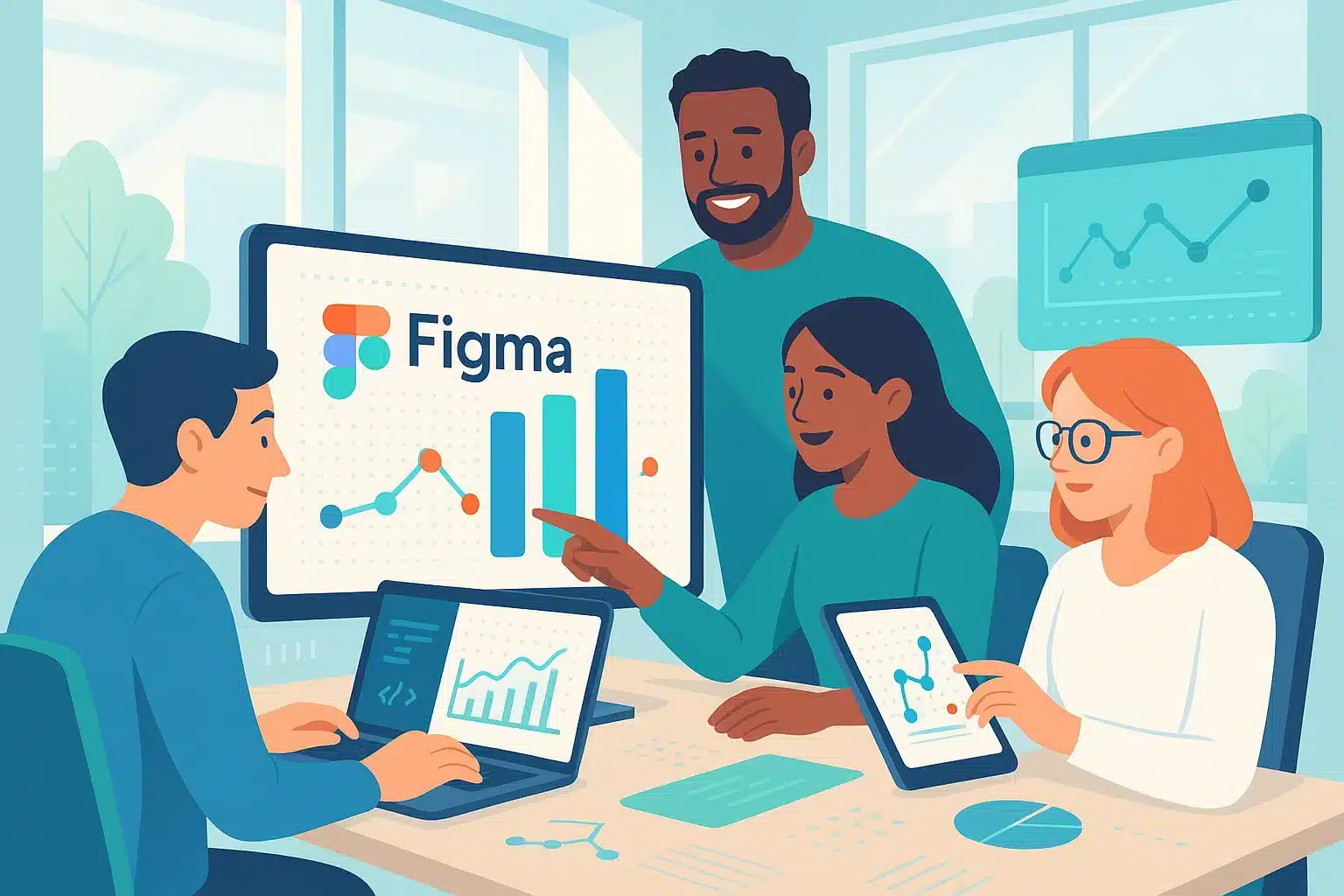
An ideal entry point for learning design
You don’t need to have studied at Gobelins to start using Figma. This is one of its great strengths: it makes design accessible, educational, almost playful.
Thanks to the Figma Community, you can explore thousands of public files. Templates, UI kits, inspiring mockups, open-source design systems… Everything is there, downloadable, modifiable, and free. A practical way to learn by observing and practicing. Beginners can follow online courses, often centered around Figma: UI design, UX writing, design thinking, accessibility, responsive design…
On YouTube and in specialized bootcamps like those from DataScientest, Figma is frequently the first tool introduced to students. And for good reason: intuitive interface, progressive learning, immediate visual feedback… Figma is an ideal entry point for anyone looking to grasp the logic of a well-crafted product.
Figma, prototyping becomes a team effort
It’s a turning point in how interfaces are designed, how different professions collaborate, and how design becomes more fluid, more open, more intelligent. By combining the best of cloud, prototyping, collaboration, and simplicity, Figma has emerged as the new standard in product design.
Do you want to master Figma and explore other tools that assist you in creating without coding? DataScientest offers No-Code training that’s perfect for designing prototypes, applications, or even automations without development. Whether you’re a beginner or transitioning, these courses allow you to explore the entire no-code universe (Figma, Webflow, Bubble…), work on real projects, and achieve true autonomy in digital creation.
With immersive teaching and adaptable paths (bootcamp, work-study, or continuous learning), you can quickly transform your ideas into products without needing to learn code. Discover the no-code universe, and change your perspective!
You now know everything about Figma. For more information on the same subject, check out our complete article on No Code and our article on Bubble.

